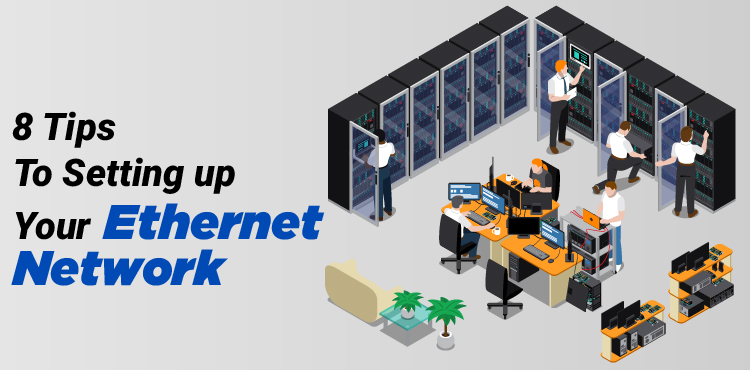We are living in the digital era, and to stay connected, almost every home and office has a network connection — be it wired or wireless. The major purpose of setting up a network is to connect multiple devices along with connecting them to the internet. For wired connectivity, usually Cat6 ethernet cable is preferred whereas, for wireless networks, there are multiple options out there on the market.
This article will help you learn how to set up an ethernet network.
Going wired or wireless
While both wired and wireless serve the same purpose but wired networks deliver far better data transfer speed, reliability and security, bandwidth capabilities, protection against crosstalk, and other interferences. Owing to these very reasons, gamers and businesses usually opt for wired networks. For setting up wired networks, the best cords are Cat5e ethernet cable, Cat6 ethernet cable, and Cat6a ethernet cable.
Cat5e ethernet cable offers a data transfer speed of 1Gbps at a distance of 50 meters or 164 feet. Cat6 ethernet cable provides a data transfer speed of 10Gbps at the same lengths, but at a distance of 100 meters or 300 feet, the data transfer speed drops to 1Gbps. The bandwidth capabilities of Cat5e are 100MHz but our cables support 350 MHz.
The same goes for our Cat6 cords. The TIA/EIA standards say that Cat6 cords should support bandwidth capabilities of 350MHz but our cables perform way better at 550MHz.
Cat6a ethernet cable supports a 10Gbps data transfer rate at a distance of 100 meters but with far better bandwidth capabilities of 750MHz. If there are no magnetic interferences, less or more, wired networks stand true to these stats. Contrarily, wireless networks face lots of connectivity issues, hindrances, and they aren’t secure as well. So, it is always better to opt for a wired network.
Choose Components Wisely
Usually, small office networks and home users will go for a mixed network, as most people use smart devices including mobiles, laptops, iPods, tablets, among many others. You will be required following components:
- Cat5e ethernet cable or Cat6 ethernet cable or Cat6a ethernet cable,
- Wireless router,
- Ethernet Hub/Switch,
- RJ45 connectors,
- Telephone Cables with RJ10 connectors,
- The wireless access point,
- And, broadband filters.
Pick Server that Surpasses Your Basic Requirements
It is always better to spend some extra money on selecting the server that exceeds your basic requirements; doing so will leave room for up-gradation as you may need to add some more devices to your network in the future. Choosing the best server for your network is also important as they support a wide array of devices and applications along with performing myriad functions.
Pick Best Computers
The selection of the right PCs or laptops depends on two factors: The first one is your budget and the second one is basic requirements. If budget is not the problem, you should always go for the latest version as they will remain relevant for a considerable time in the future. For home users, you will go with Windows Home Edition whereas businesses will go for the Windows 10 Professional.
Always Secure Your Network
Whether home ethernet network or business ethernet network, data integrity and security remain the key. A firewall scans internet traffic coming in and out of your networks and thwarts hacking or other malicious attempts.
Pick Suitable Network Switch
The hack for selecting a suitable network switch is that it should have enough ports that can support all devices on the network. For instance, if your network comprises 12 devices, the ports available should be 18.
Don’t forget to label
Proper labeling is essential to keep a proper track record of every component and device of your network. It comes in handy when troubleshooting a problem or when running an audit.
Manage Devices & Components Neatly
You should always manage your devices and other components neatly. For instance, ethernet cords — whether Cat5e ethernet cable, Cat6 ethernet cable, or Cat6a ethernet cable— should be installed in places where crosstalk or other interferences are non-existent (which isn’t possible) or minimum.




















